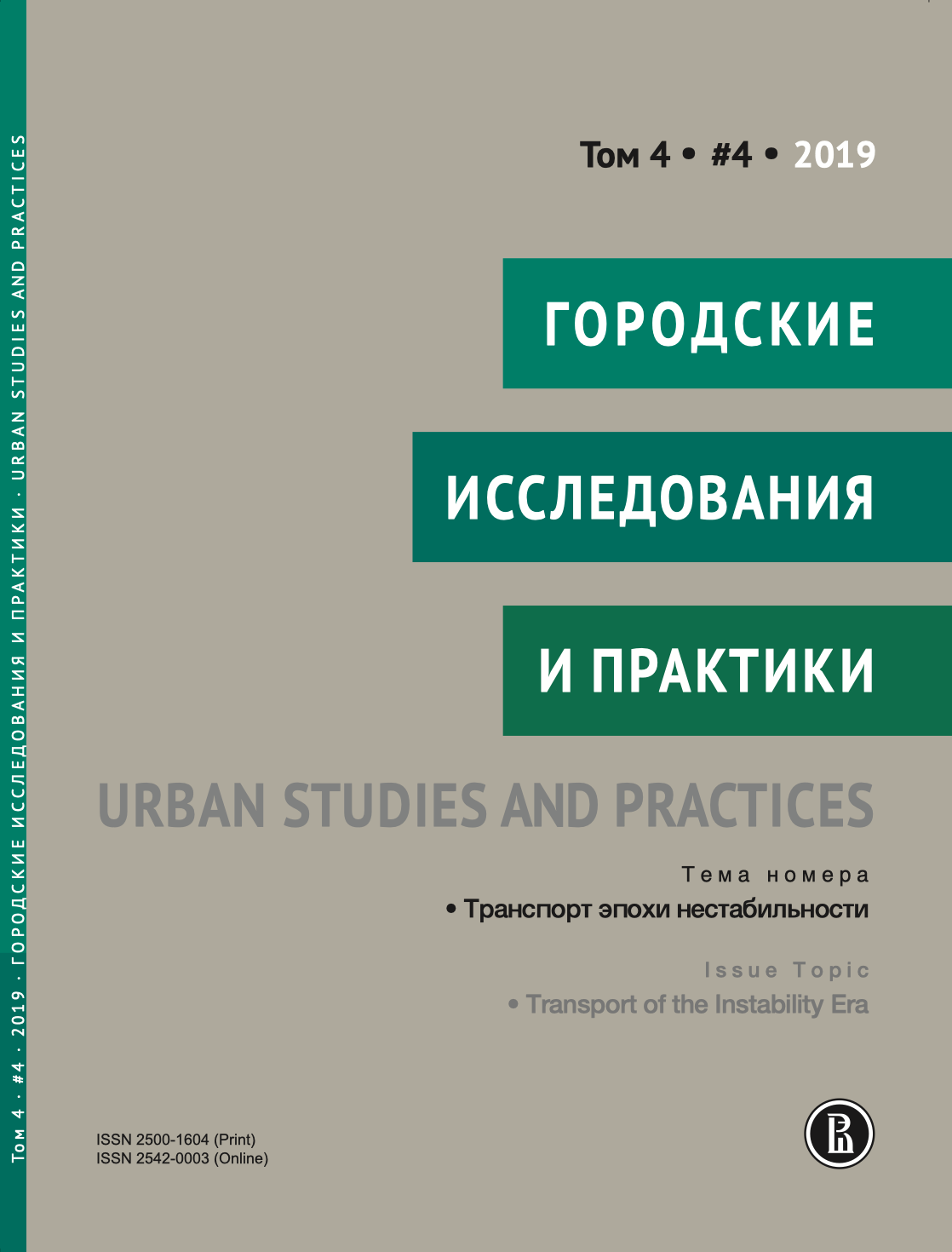ПОЛИЦЕНТР: модель размещения мест труда, проживания и обслуживания
Аннотация
Статья посвящена модели, оптимизирующей размещение основных городских функций на территории Москвы по критериям их взаимной транспортной доступности. Рассматриваются результаты экспериментов по моделированию, проведенному в 2018–2019 годах. Демонстрируется, что прогнозные варианты развития города, генерируемые в процессе оптимизации, способствуют, во-первых, решению транспортной проблемы города (показано на примере вычислительных экспериментов по утреннему часу пик для нескольких десятков вариантов прогноза), во-вторых, созданию условий для развития полицентричности города за счет увеличения посещаемости сложившихся и возникающих периферийных (как правило) центров обслуживания (обосновано на уровне принципов и элементов алгоритма оптимизации). При анализе прогнозной динамики, построенной на основе генерируемых вариантов развития Москвы и еще двух городов, выявлены признаки приближающихся моментов перехода от фазы территориального роста к фазе структурной реорганизации и обратно. Закономерность таких переходов обоснована А.Э. Гутновым в рамках общей теории городского развития.
Скачивания
Литература
Бабий А.В., Каверин А.Р., Шмульян Б.Л. (1984) Принципы организации диалога для формирования стратегии размещения обслуживающих центров в крупнейшем городе // Элементы диалоговой системы анализа и управления развитием города. Сборник трудов. Вып. 14. М.: ВНИИСИ. С. 49–57.
Баевский О.А. (2001) Эволюционный подход к управлению градостроительным развитием крупнейшего города. Московский опыт // Градостроительство России XXI века: сборник научных статей РААСН. М.: Московские учебники и Картолитография.
Гутнов А.Э. (1984) Эволюция градостроительства. М.: Стройиздат.
Гутнов А.Э. (1985) Системный подход в изучении города: основания и контуры теории городского развития//Системные исследования. Методологические проблемы. М.: Наука. С. 211–232.
Гутнов А.Э., Каверин А.Р., Лапшев П.И. (1979) Исследование транспортно-коммуникационных характеристик территории г. Москвы с использованием ЭВМ //Моделирование городских систем. Труды I школы-семинара. М.: ВНИИСИ. С. 202–210.
Каверин А.Р. (1983) Использование ЭВМ для сравнения и оценки альтернатив стратегий территориального развития города //Управление большим городом. Тезисы докладов II всесоюзной конференции. Часть 1. Москва: НПО АСУ «Москва». С. 131–133.
Каверин А.Р. (2004) Критерии сравнения альтернатив развития города с учетом транспортной доступности //Вопросы планировки и застройки городов: Материалы XI Международной научно-практической конференции //Ю.В. Круглов, В.С. Глухов (ред.). Пенза: ПГУАС. С.138–141.
Каверин А.Р., Заблудовский М.И. (2003) Методика размещения центров обслуживания с учетом факторов доступности //Вопросы планировки и застройки городов: Материалы X Международной научно-практической конференции //Ю.В. Круглов, В.С. Глухов (ред.). Пенза: ПГАСА. С. 55–58.
Каверин А.Р., Лапшев П.И. (1979) Метод использования информационного обеспечения модели размещения функциональных подсистем города для решения локальных градостроительных задач //Автоматизация управления городом. Тезисы докладов семинара. М.: ГлавНИВЦ. С 23–26.
Котов Е.А., Гончаров Р.В., Новиков А.В., Никогосян К.С., Городничев А.В. (2016) Москва: курс на полицентричность. Оценка эффектов градостроительных проектов на полицентрическое развитие Москвы /О.А. Баевский, Г.В. Витков, Т.Е. Шварева (ред.). М.: НИУ ВШЭ.
Лившиц В.В. (1979) Разработка математической модели и прикладных программ для проектирования системы учреждений обслуживания городского населения //Достижения и перспективы. Вып. 11. Города и системы расселения. М.: МЦНТИ, КСА при Президиуме АН СССР.
Шмульян Б.Л., Панина И.К. (1980) Энтропийные методы моделирования городских систем. М.: ВНИИСИ.
Dubov Yu.A., Kaverin A.R., Manukyan S.A. (1984) Normative-Behavioural Models of Service Allocation in Urban Systems //Sistemi Urbani. Napoli: Guida Editori. No. 2. P. 163–194.
Harris B. (1966) Notes on Accessibility. Philadelphia. Univ. of Penns.
Lowry I. (1964) A Model of Metropolis. Santa Monica. CA: RAND Corporation.

